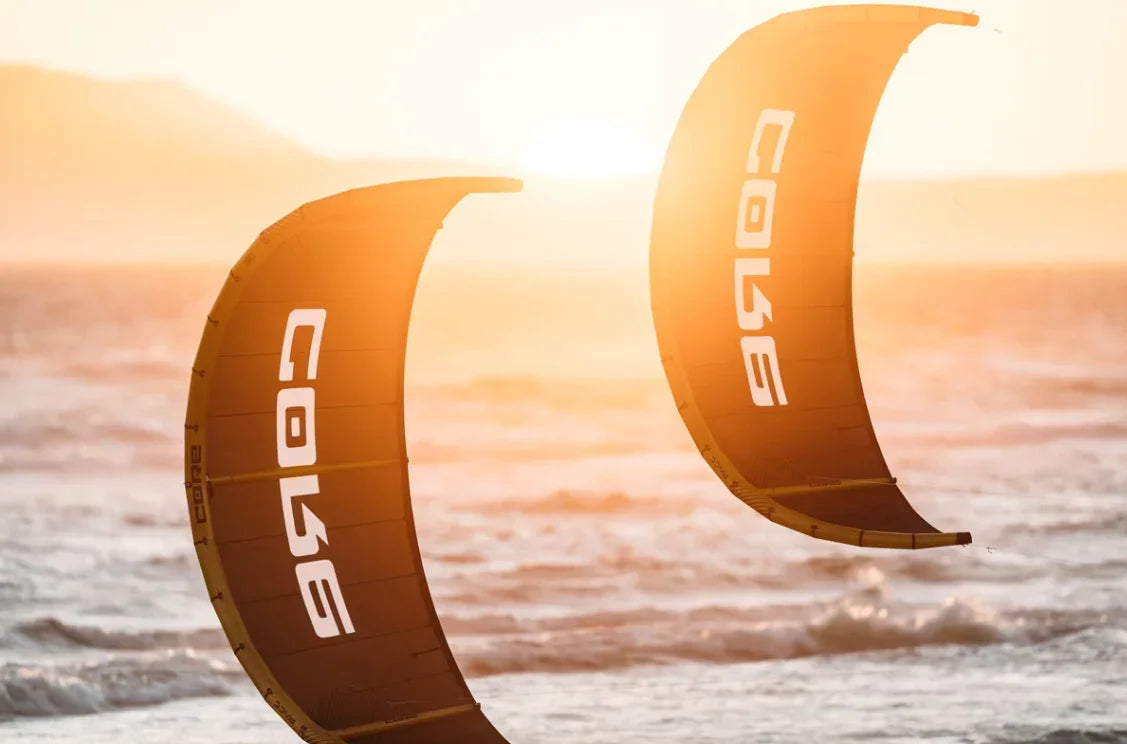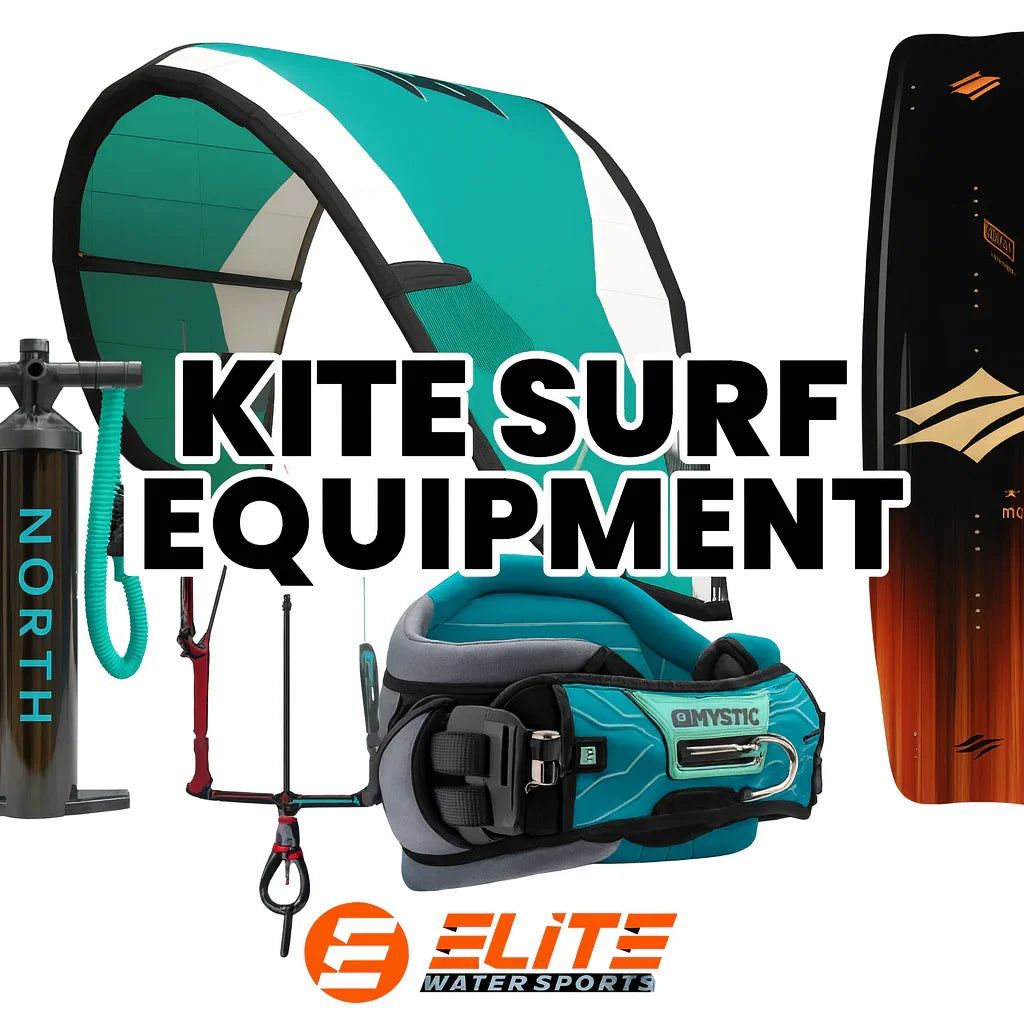ELITE WATERSPORTS
Last updated 1-12 -2025
The Easiest way to water start kiteboarding
Everything you need to know.

A lesson on different water starts
Kiteboarding is a sport that rewards patience, practice, and the right techniques. In this blog, we dive deep into the world of shallow water starts, offering you a fresh perspective on how to approach one of the most foundational skills in kiteboarding.
By focusing on a controlled and accessible environment, you’ll learn how to build confidence, master your balance, and refine your kite control—all while staying safe and in control. Whether you’re just starting out or looking to perfect your technique, this guide provides actionable steps to level up your skills.
You’ll discover two essential shallow water start techniques—both-feet-in and one-foot-in—that cater to different needs and skill levels. From breaking down each step to providing pro tips that make the process easier, this blog ensures you have all the tools you need to succeed. We also explore advanced methods like the skimboard start and toe-side skim start, offering dynamic and playful options for those looking to push their boundaries. No matter where you are in your kiteboarding journey, there’s something here to help you grow.
This blog isn’t just about technique—it’s about rethinking the way you approach kiteboarding. By understanding the benefits of shallow water starts, you’ll learn how to eliminate unnecessary challenges and create a learning environment that accelerates your progress.
You’ll also gain insights into how gear, conditions, and mindset all play a role in your success on the water. The goal is to equip you with a solid foundation that makes every session enjoyable and productive.
Finally, we go beyond just teaching the moves. This blog emphasizes the importance of practice, persistence, and embracing the process of learning. Kiteboarding is more than just a sport; it’s a journey of personal growth and discovery. By the end of this guide, you’ll not only have the techniques down but also a renewed sense of excitement and confidence to take on the water with style and control. Let’s get started!




Table Of Contents
- Why Shallow Water Starts Are The Best
- Mastering the Two Essential Shallow Water Start Techniques
- Advanced Techniques for Shallow Water Starts
- FAQ: Shallow Water Start Tips
- Why Elite Watersports.
Why Shallow Water Starts Are The Best
Imagine learning to water start in kiteboarding without the struggle of being swept away by currents or fighting to regain control.
Shallow water starts offer a game-changing approach, giving newer riders an accessible, confidence-building way to master the basics. This guide is inspired by our video featuring Elite Watersports Aaron McClearnon showcasing why shallow water starts may be the best beginner method and how to execute them effectively.
Let’s dive into the details, techniques, and tips that can transform your kiteboarding progression.
Avoid Currents and Chaos:
One of the biggest challenges for beginners is managing the chaos of open-water starts. With shallow water starts, you eliminate the struggle of strong currents pulling you off balance or dragging you out of position.
Build Confidence Safely:
Shallow water provides a controlled environment for practice. You’ll feel more grounded—literally—and focus on your kite and board skills without fear of tumbling into the unknown.
Immediate Feedback and Rapid Progress:
Practicing in shallow water allows you to quickly identify mistakes and adjust.The environment gives you instant feedback, accelerating your learning curve compared to deep-water starts where you'll be doing a lot more recovery.

Shallow Water Start Basics
Choose the Right Spot
Conditions: Look for steady wind and calm waters without heavy gusts.
Depth: Knee- to waist-deep water is ideal for shallow water starts.
Safety: Avoid obstacles like rocks, shells, or anything that could damage your board or harm you.
Positioning Your Kite
Keep your kite at 1 o’clock or 11 o’clock for stability. Avoid positioning it directly at 12 o’clock, as this can lead to instability.
Keep slight tension on your lines to maintain control and responsiveness.
Gear Check
Use a beginner-friendly board with forgiving features.
If your board is high-end and you want to avoid scratches, try the one-foot-in technique (explained below).
Mastering the Two Essential Shallow Water Start Techniques
Both Feet In: The Classic Shallow Water Start.
This method is perfect for beginners who want to get comfortable on their board.
Starting with both feet in the straps is often the easiest way to feel grounded and in control, especially if you're new to kiteboarding. This method allows you to focus on your kite and body positioning without worrying about balance right away.
The shallow water adds an extra layer of confidence—you’re not drifting away or battling against currents. Think of this as your "training wheels" phase. With each attempt, you'll notice improvements in how you handle the pull of the kite and transition into riding smoothly.
One key tip is to keep your movements deliberate and your mind focused. Breaking the board’s suction from the water might feel awkward at first, but it’s all about timing and trusting your kite. If you lose your balance and land on your butt, that’s totally fine.
The shallow water makes it easy to reset and try again. With a little patience and practice, you'll have this in no time.
Steps:
1. Place your board flat on the shallow water surface.
2. Secure both feet into the straps and find a comfortable stance.
3. Lift the edge of the board to break any suction with the ground by tilting onto your toe-side rail.
4. Use gentle figure-eights with your kite to create tension in the lines.
5. Lean back into your harness, send the kite for power, and let it pull you up onto the board.
Pro Tip: If you fall, no worries! Reset and try again—repetition builds muscle memory. I read somewhere that it takes 400 attempts for the mind to form a new synapse unless it’s done in play. Then it only takes 20! Be sure to have fun and enjoy the process.


2. One Foot In: Protect Your Gear and Add Control.
This technique is great for riders concerned about scratching their board or who want to improve their balance and kite control.
The one-foot-in technique is all about balance and finesse, making it a perfect step up once you’ve mastered the basics.
By starting with just one foot in the strap, you reduce the chances of damaging your board on rough surfaces like shells or rocks. It’s also a great way to feel more connected to your kite, as you’ll need to rely on its lift for balance and control.
At first, this method might feel a bit awkward. Balancing on one foot while managing your kite requires focus and coordination. The trick is to lean back into your harness for support and let the kite do most of the work. Once you hop onto the board, don’t worry if your feet aren’t perfectly placed in the straps. Just get moving and use the kite’s lift to adjust your stance. This technique teaches you how to flow with the kite’s power, making it a valuable skill as you progress.
Steps:
1. Place your back foot in the strap and balance your front foot on the ground or slightly above the board.
2. Raise the kite to 12 o’clock, lean back into the harness, and gently send the kite for lift.
3. As the kite pulls, hop onto the board and place your front foot in position (strap placement is optional at this stage).
4. Adjust your feet once you’re riding to get them securely in the straps.
Pro Tip: Use the kite’s lift to lighten your weight on the board when adjusting your feet. This keeps the board gliding and prevents drag. You will learn a lot about the upward lift of the kite when practicing your kiteboarding transitions.
Check out our video on transitions here to understand what’s happening with your kite to make you weightless.
Advanced Techniques for Shallow Water Starts
1. The Skimboard Start
Perfect for intermediate riders looking to add style and fluidity to their starts.
The skimboard start is a stylish way to upgrade your kiteboarding game. By pushing your board ahead and running toward it, you’re demonstrating real skill and stee aka style with ease.
This technique teaches you to synchronize your movement with the kite’s pull, which is essential for more advanced tricks down the line.
Remember a lot of kiteboarding is built on repping out the fundamentals.
While it might seem intimidating at first, this method is surprisingly intuitive once you get the hang of it.
The key is to create a sense of flow. As you walk or jog toward your board, the kite generates apparent wind, making it easier to get moving once you hop on.
Don’t overthink your foot placement—just aim to land on the board and get moving. The straps can wait until you’re stable and riding smoothly. This start is perfect for building confidence and adding flair to your sessions.
1: Push your board 10 feet in front of you slightly downwind.
2: Walk or jog toward it with your kite positioned at 1 o’clock. Send the kite up to unweight your self
3: Jump onto the board as you send the kite forward, keeping your feet loose until you find your balance.


2. Toe-Side Skim Start
This variation requires prior experience riding toe-side but adds a playful dynamic to your starts.
1: Position your board toe-side to the breeze.
2: Run toward it with the kite set at 1 o’clock.
3: Jump onto the board, starting toe-side, and transition to heel-side as you gain control.
Why Rethink Your Water Start?
Learning to kiteboard is all about breaking down barriers. Shallow water starts offer:
• A safe, beginner-friendly environment.
• A faster path to mastering balance and control.
• The ability to practice technique with minimal external distractions.
For anyone looking to reduce frustration and accelerate their progress, shallow water starts are the way to go.
FAQ: Shallow Water Start Tips
Q: Can shallow water starts damage my board?
A: There is always risk when in shallow water. Loaction will be the biggest factor. You can reduce the risk if you use the one-foot-in technique or keep the board from dragging on rough surfaces.
Q: Is shallow water better for beginners?
A: Absolutely provided you’ve taken a kiteboarding lesson first. It’s a more forgiving environment, ideal for building confidence and refining skills.
Q: What if I struggle with balance?
A: Start with the both-feet-in technique, as it offers more stability. As you progress, challenge yourself with the one-foot-in method for better control.
Q: How do I choose the right location?
A: Prioritize areas with calm, shallow waters, minimal obstacles, and steady winds.
Local kiteboarding schools often know the best spots.
Shallow water starts are more than just a technique—they’re a mindset shift for beginner kiteboarders.
By embracing this approach, you’ll build skills faster, gain confidence, and enjoy the process of learning in a controlled environment. Whether you’re just starting out or refining your technique, shallow water starts are the foundation for future success.
Where to take kiteboarding lessons in Florida.
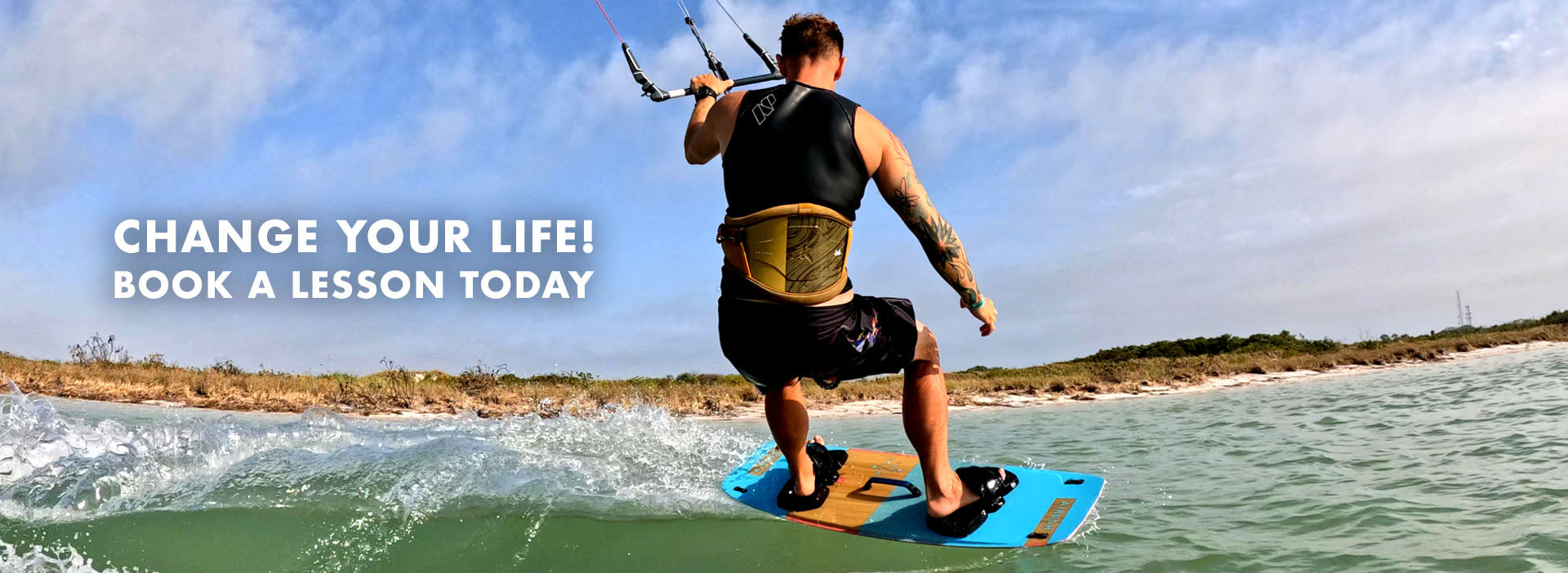 Reserve A Lesson
Reserve A LessonThe nearest kiteboarding shop and kite school that services Dunedin and Clearwater is Elite Watersports located in St Petersburg. Give us a call and we can get you up and riding in no time. We teach kitesurfing lessons at Skyway beach a short drive south of Dunedin. Our condions are also beginner friendly and perfect for learning.
Call us for more info on kiteboarding in Florida.
Elite Watersports has served the Tampa and St Petersburg area for years. They offer kiteboarding and wingsurfing lessons. They also have a retail shop equpit with all of the latest kitesurfing gear.
If you need help give us a call. .
(727)-800-2202
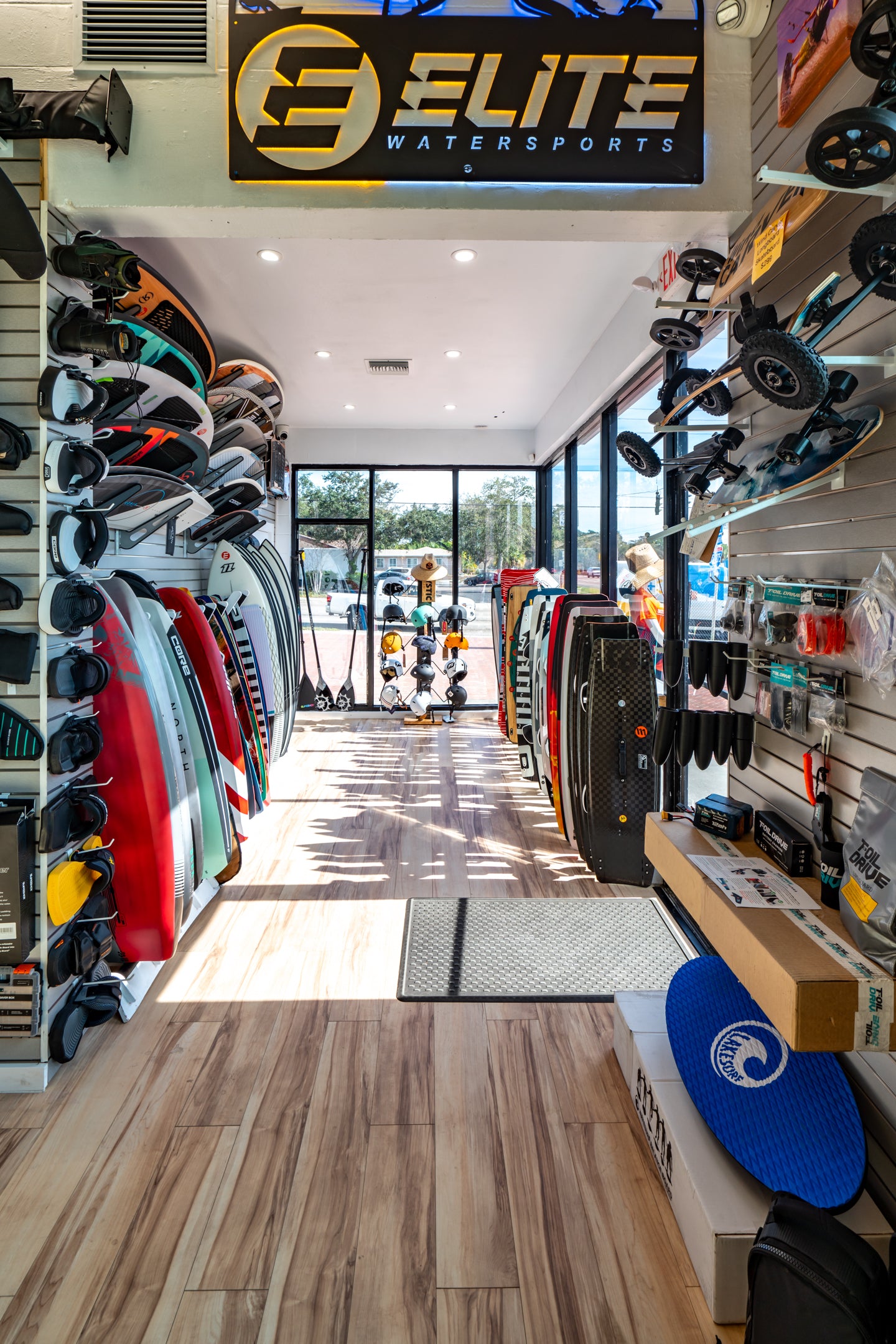
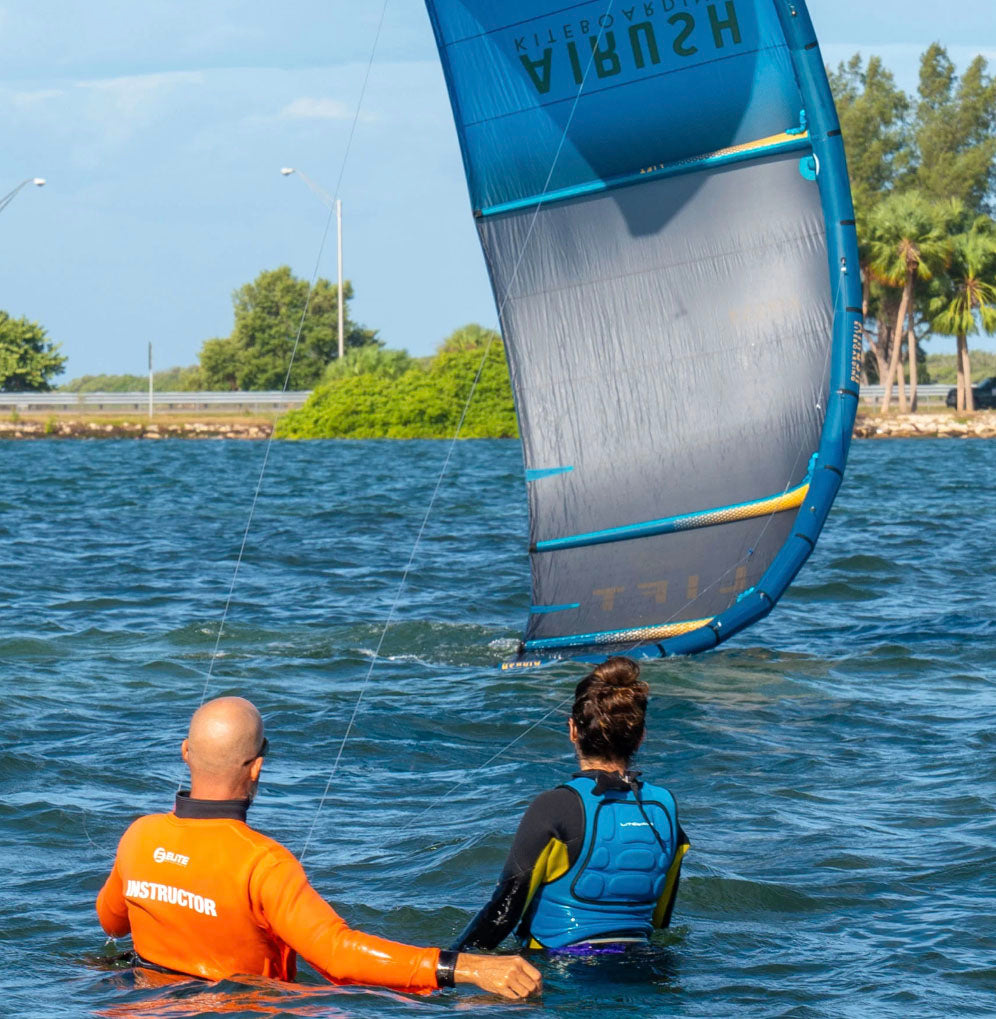
Author

Ryan "Rygo" Goloversic
Rygo is a globally recognized kiteboarder, Airush team rider and an advocate for wakestyle kiteboarding. When he's not writing articles or producing kite videos you can catch him competing on the KPLxGKA world tour or grinding it out in the gym
Tags
Kiteboarding Waterstart
You May Also Like
Want To learn more about kiteboarding?
Follow us to receive the latest update on our journey experience

